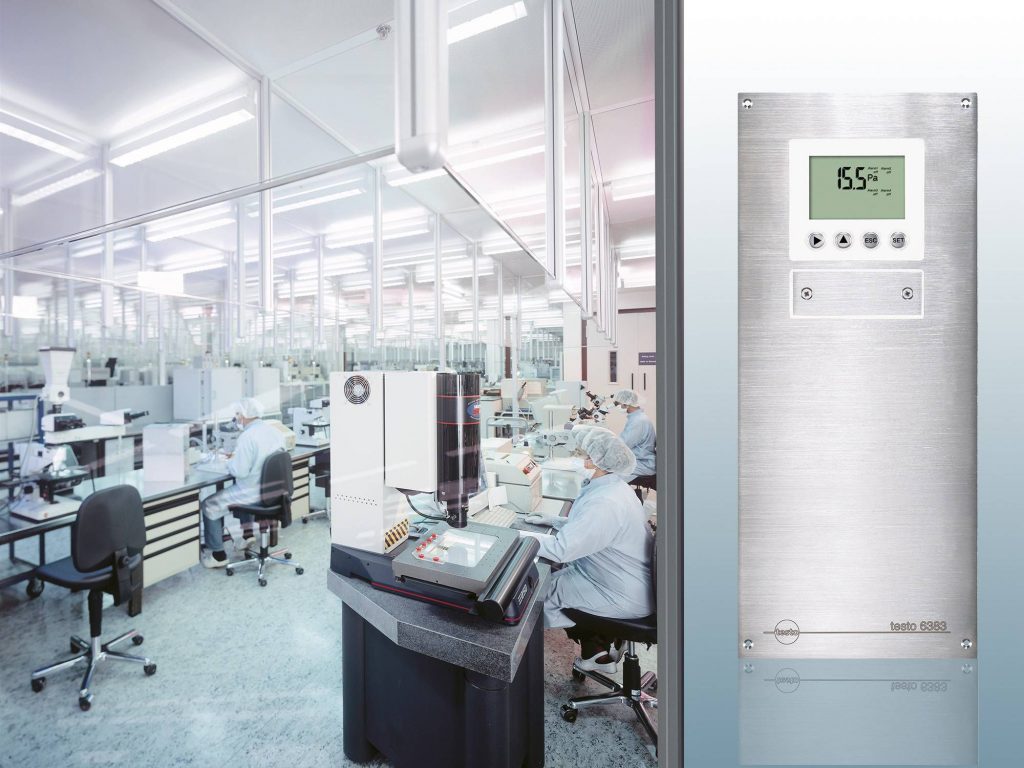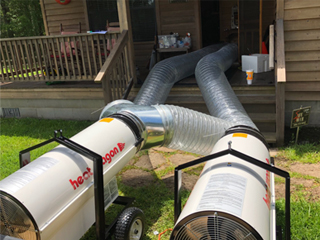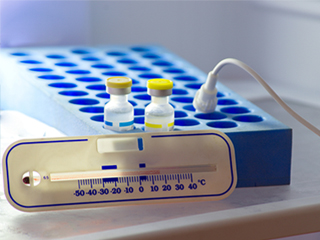Humidity naturally surrounds every item on the planet. It is beneficial to humans; however, it can spell trouble for IT equipment. Uncontrolled humidity is a danger to electronic components, resulting in downtime and equipment failure. Water vapor in the air conducts away dangerous static electrical discharge, which protects IT equipment. Relying on precision cooling solutions to regulate the proper humidity level in a data center does not guarantee adequate humidity levels in the air intake of the IT equipment.
It was previously believed that humidity control in data centers follows the particular need of the IT equipment, which is why data center humidity was regulated at a very narrow range but research has shown that IT equipment is able to bear a much greater humidity range compared to what was previously believed. Since then, the industry now recognizes that by allowing a greater range of relative humidity (RH) and given proper regulation, these methods can turn out to be more cost-effective since a significant amount of energy is saved while maintaining acceptable IT performance.
In order to ensure ideal environmental monitoring and control in the data center, temperature and humidity must be closely monitored. Too high humidity can cause condensation, which might lead to water damage. Too low humidity can cause static discharge buildup, which endangers electronics.
Humidity and the IT Environment

Air is composed of various gasses, which are water vapor, carbon dioxide (0.3%), oxygen (21%), and nitrogen (78%). The water vapor in the air is known as humidity. It is vital for the air in the IT environment to contain the right amount of water vapor in order to maximize the functionalities of the equipment. Too little or too much water vapor in the air may lead to downtime in equipment and reduced productivity.
The amount of water in the air is very little, but it is not fixed. The water that can be held in the air directly correlates to the increase and decrease of temperature.
At a minimum, there is one humidity monitor that determines relative humidity (RH) in most data centers. It shows data in the form of relative humidity. “Relative” pertains to the humidity of the air close to what it could be given its temperature. When the air is hotter, it is capable of holding more water. It is expressed as a percentage between 0% to 100%. If the relative humidity is zero, then there is no water vapor in the air. If the relative humidity is 100%, the air is holding the maximum amount of water vapor it can. However, controlling relative humidity without taking into account the temperature at the same time would be useless. The same air measured may have a different relative humidity depending on its temperature. When the air is cooled, its relative humidity increases until the water starts condensing. This is also known as the dew point, and it is expressed in a temperature form. Dew point is the temperature when water vapor disappears in the air and manifests as liquid water on objects.
Dew point and relative humidity are two related factors that are important in an IT environment. The dew point in the air at a specific temperature will rise as the relative humidity of the air increases. The air’s dew point is equal to its temperature when it reaches 100% relative humidity. In such a case, the air will be considered saturated.
Humidity has positive effects in a data center when it is regulated at the proper level. However, possible problems might occur if it is too high or too low. When the proper humidity level is maintained, there is a reduced “charging” effect. The charging effect may lead to static electrical discharge by making the air a little more electrically conductive and the surfaces it passes thoroughly slightly damp. When the positive and negative charges are not balanced, static electricity is produced, and it will be unlikely to result in electrical discharges (10,000+ volt sparks) due to the slight increase in conductivity in the air. The flow of cool, low humidity throughout the data center is a potential source of static electricity. When this cool air moves through an ungrounded insulated surface, proper humidity levels must be maintained at all times. High relative humidity levels in an IT environment lessen the chance of static discharge; however, it can also increase the possibility of metal component corrosion. High humidity levels also increase the likelihood of the equipment getting harmed due to water damage. Due to this, many IT specifications indicate the acceptable humidity range regarding non-condensing humidity.
Equipment often functions normally within a humidity range of an average of 20-80% RH, provided that the temperature of the equipment and everything that surrounds it remains above dew point temperature. Rapid changes in temperature and high relative humidity in environments will likely result in condensing humidity. Exceeding upper humidity levels in IT environments with high-speed printing will result in paper stock to possibly swell and increase thickness, which will then lead to jams and overall process downtime.
What Causes Changes In An IT Environment Humidity?
There are three factors that cause changes in the humidity of the environment:
- Infiltration
- Condensation
- Ventilation
Humidifiers allow water vapor to be added, while dehumidifiers remove the water vapor. The IT environment humidity is maintained by the factors abovementioned.
Infiltration
The gain or loss of the rate of humidity due to infiltration relies on the size of the open area and the difference in temperature and humidity between the spaces. A high humidity body of air and a low humidity body would immediately equalize to a humidity level between the high and low levels when placed next to each other. The humidity levels continuously try to balance between the spaces of computer rooms that are at a different humidity level compared to the outdoor or office space air that is around them. Floors, walls, and ceilings around the IT environment should be able to stop this equalization. There are many instances in which they do not. Water vapor can enter or escape through a minuscule crack or porous surface, which can affect the IT environment relative humidity.
Condensation
In some instances, the IT environment air cooling removes large amounts of water vapor that leads to low relative humidity levels. Such an event happens when warm data center air is drawn through a computer room’s air conditioner cooling coil. Most cooling coils need to be maintained constantly at a temperature of 6.1-8.8 °C. Since this is below the required due point for air in an IT environment, water droplets can form on the cooling coil as well.
Extremely large volumes of air pass through the cooling coil at a high velocity. Liquid water or condensate forms on the cooling coil if the air remains in contact with the cooling coil with enough time to be cooled below its dew point. However, pumps located inside the cooling system condensate away from the IT environment and towards the building drainage system. In order to add the necessary water vapor back into the air stream leaving the cooling system, humidifiers are used. Humidifiers can usually be found in the air handlers and air conditioners inside the computer room.
Ventilation
People inside need to be constantly supplied with fresh outdoor air. This fresh air inside data centers and computer rooms is referred to as “make-up air” and influences the relative humidity levels. The amount of fresh air needed inside is identified when the room is designed and computed by taking into account the room’s specific use, the number of possible occupants in the room, and the laws in effect at the time of its building. Depending on the amount of outside air drawn into the room and the geography of the building, changes in IT environment humidity due to ventilation issues occur. Humidity is reduced when ventilation air is supplied from cold, dry, and desert regions, while humidity is added when ventilation air is supplied from warmer climates. The air required for ventilation is usually a known quantity and is established during the cooling solution’s specification.
Managing Humidity In An IT Environment
In order to control relative humidity inside the data centers, a set of steps need to be performed so they can meet the recommended range and conserve energy in humidification and cooling.
- Lessen the supply of fresh outdoor air inside the computer room through minimum pressurization and ventilation.
- Determine the temperature of the air that flows inside the IT equipment.
- Manage hot spot plates through moving floor gratings, using bleach, and removing the glass doors of the racks.
- Increase the air handler setpoints. When possible, increase the set point of the return air, but keep in mind that the air supply to the equipment should fall within the specified limits suggested by ASHRAE (18 ° C / 64.4 F 27 ° C / 80.6 ° F ). In order to provide constant air temperature, it would be best to adjust the control strategy CRAC return air to supply air control.
- Change the setpoints of the relative humidity in air handlers. It should be maintained above 5.5°C / 41.9°F dew point air (DP) for humidification.
- The dew point must fall below 15°C / 59°F to de-humidify.
- Should there be an essential source of external humidification brought by high humidity, and there is a need for de-active humidification, relative humidity should be controlled in relation to the return temperature to keep the dew point under 15°C / 59°F.
- The temperature of the dew point and dry bulb of the air flowing entering the IT equipment should be monitored periodically.




